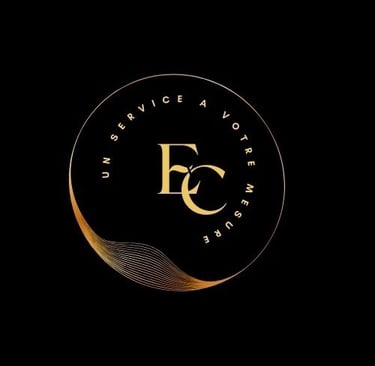Social Groups and HR: Mastering the Art of Balance with Winnicott, Lencioni, and Jean-Michel's Café
Discover with humor and insight how to manage self-esteem, conflicts, and team cohesion in social groups and workplaces. Because being in HR is a bit like playing Tetris... but with humans! Welcome to the Social Group Club: A Guide with a Touch of Humor and HR Wisdom Ah, social groups! These life circles envelop us like an ill-fitting sweater: sometimes warm, sometimes irritating, but always present. Are you an HR professional, a coach, or a personal development enthusiast? Take a seat; let's dive into this fascinating social puzzle, blending reflection with a touch of good humor.
MANAGEMENT
Lydie GOYENETCHE
12/28/20243 min read


Donald Winnicott and the Mirror Effect: Structuring but Not Deterministic
From our earliest social interactions, the mirror effect plays a crucial role in shaping our personality and self-esteem. Observing others helps us find our place, calibrate our actions, and understand group dynamics. Donald Winnicott, in his work on child development, emphasized the importance of a "good enough" environment, where a child's self-image is validated by those around them, helping to build identity.
However, this mirror effect is not absolute. Individuals can transcend limiting environments and use their experiences as a foundation for resilience. Boris Cyrulnik, a pioneer of resilience theory, shows that even adverse contexts can become opportunities for growth through positive role models and transformative experiences. Thus, the mirror effect can serve as a catalyst for self-improvement rather than a restrictive force.
Rosenberg and Freud: Self-Esteem as the Thread of Social Adaptation
Defining Self-Esteem in Professional and Psychological Contexts
Self-esteem, a central concept in psychology, refers to how individuals perceive their own worth. According to Rosenberg (1965), it is composed of two dimensions: a sense of competence ("Am I capable?") and a sense of self-worth ("Am I worthy of love and respect?"). Self-esteem is dynamic, shaped by social interactions and life experiences.
Contrary to common belief, high self-esteem does not equate to arrogance or narcissism. Sigmund Freud and later Heinz Kohut explored the complexities of narcissism. Freud introduced the idea of primary narcissism, a normal developmental stage where a child is self-centered. Jean Piaget's work on psycho-affective development further explains how children gradually learn to consider perspectives beyond their own.
Donald Winnicott introduced the concept of "me-for-others," emphasizing that the transition from primary narcissism to social relationships depends on a supportive environment. Deficiencies in this process can lead to pathological narcissism, often a defense mechanism for broken self-esteem. Boris Cyrulnik highlights the role of imitation in self-esteem development; observing and mirroring parental figures helps children shape their worldview. However, dysfunctional role models can negatively impact this process.
Patrick Lencioni and Team Cohesion: Building Strong Groups
Group or team cohesion results from complex interactions intertwining relational, emotional, and functional elements. In the workplace, cohesion is built on several key pillars:
1. Trust as a Foundation
Trust is the glue that binds successful teams. Inspired by Patrick Lencioni’s The Five Dysfunctions of a Team, trust is fostered in environments where vulnerability is accepted. Members who can admit mistakes, express doubts, and share ideas without fear of judgment contribute to a culture of psychological safety.
2. Common Goals: A Clear Direction
A cohesive team understands its purpose. Organizational culture expert Edgar Schein asserts that shared, explicit goals reduce conflict and enhance collaboration, aligning individual and collective efforts towards a meaningful objective.
3. Marshall Rosenberg and Communication: The Essential Connector
Clear, open communication prevents misunderstandings and resolves tensions. Marshall Rosenberg's Nonviolent Communication (NVC) provides tools for active listening and constructive dialogue. In a team, the quality of interactions is as vital as the quality of work output.
4. Thomas and Kilmann: Turning Conflict into Growth
Conflict is inevitable in any group. Managed well, it can drive progress. The Thomas-Kilmann Conflict Mode Instrument categorizes approaches from avoidance to collaboration. Cohesive teams leverage conflicts as opportunities for innovation and learning.
Amy Edmondson and Conflict: Barrier or Catalyst?
Ah, conflict! We often fear or avoid it, but should we? Conflict isn’t necessarily the villain; sometimes, it’s more like an awkward but insightful uncle—uncomfortable yet full of valuable truths.
A Safeguard Against Over-Adapting to Group Norms
In a group, conflict can prevent excessive conformity. Consider an employee who, for fear of disturbing the status quo, constantly meets implicit expectations. Over time, this leads to burnout or disengagement. Expressing conflict allows individuals to assert boundaries: “Stop, I’m here, and this isn’t working for me.”
The Role of Conflict in Innovation
A conflict-free group is like soup without salt—bland and ineffective. Constructive disagreement challenges assumptions and fuels creativity. Pixar, for example, institutionalized open critique with Braintrust meetings, where candid feedback drives high-quality storytelling. The key? A spirit of mutual respect.
That said, excessive unresolved conflict breeds dysfunction. Amy Edmondson’s concept of psychological safety ensures that individuals can express dissent without fear of retaliation, striking a balance between harmony and critical debate.
Conclusion: Building Resilient Teams with Winnicott, Edmondson, and Lencioni
Cohesion in a team is not decreed; it is cultivated. It rests on trust, shared goals, quality communication, and mature conflict resolution. When these elements are in place, a team evolves from a collection of individuals into a high-performing, resilient unit capable of tackling challenges together.
Dear HR professionals and coaches, you are the architects of this cohesion. Foster an environment where individuals flourish while contributing to a common purpose. A united team doesn’t just function—it thrives. Let’s build greatness, together.


EUSKAL CONSEIL
0033782505766
euskalconseil@gmail.com
This website uses only Plausible Analytics, a privacy-friendly web analytics tool.
No cookies are used, and no personal data is collected from visitors.
The system is fully compliant with the General Data Protection Regulation (GDPR), the ePrivacy Directive, and CNIL recommendations.
You can read more about Plausible’s data policy here: https://plausible.io/data-policy